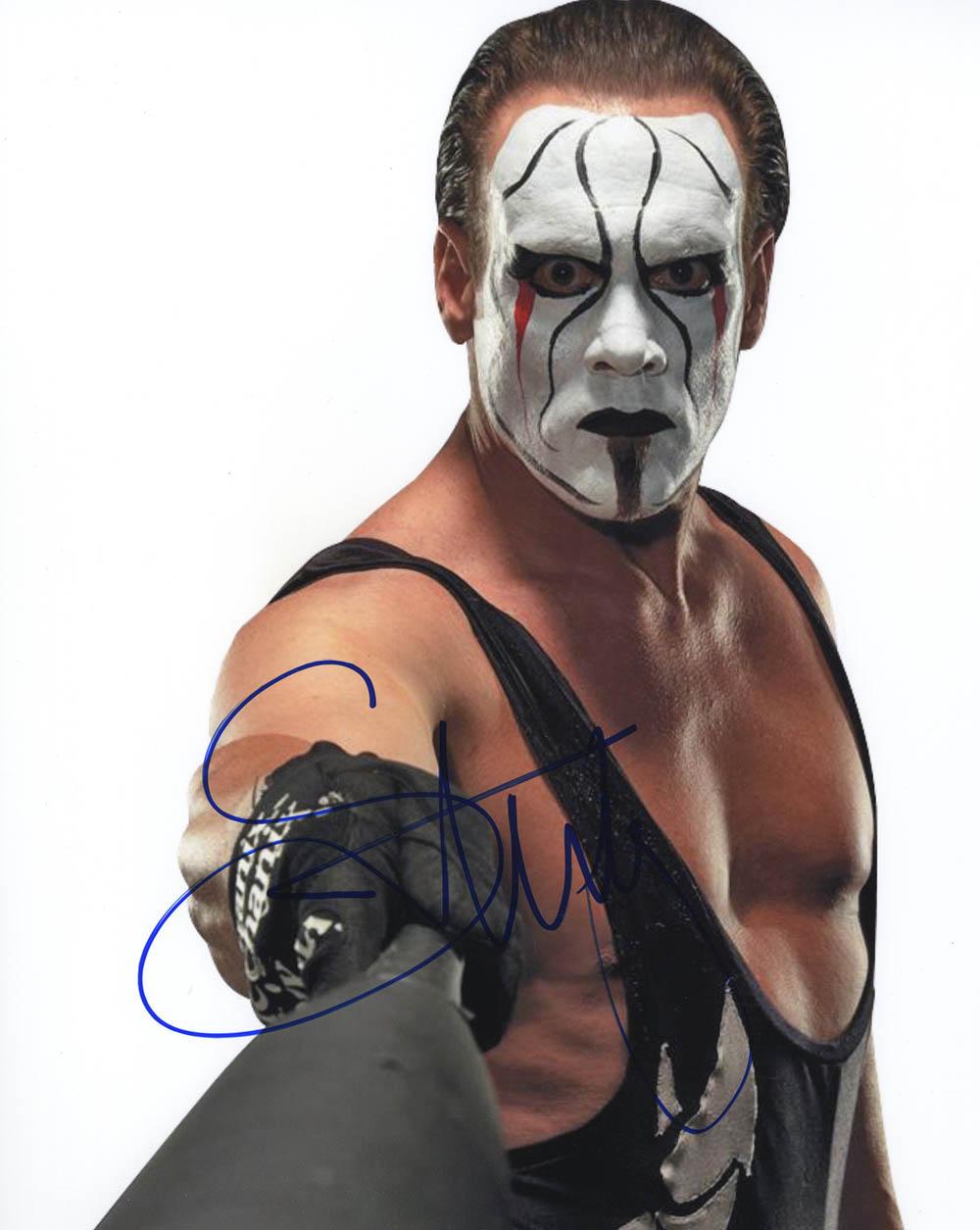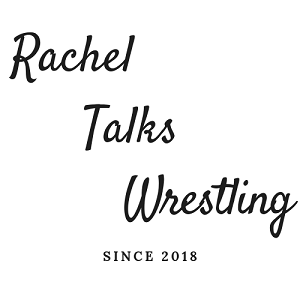
To finish off my list of the greatest wrestlers of all time is my personal favorite. He is the icon; the franchise. He is Sting.
Sting comes in as the leader of my top 5 list for many reasons. For one, he is not just a WWE superstar (and that is a very recent thing). He is considered the greatest WCW wrestler of all-time. He was dubbed “the franchise” for this exact reason. In the history of professional wrestling, no two promotions have held the top spot like WCW and WWE. And the rivalry between the two promotions in the 90’s can strongly be attributed to Sting’s work. He is considered to WCW what Hulk Hogan was for WWF/E (who made the list at number 4, and you can find that here). Let’s delve into the career that shaped so many wrestling fans and alluded the WWE’s hold for nearly 15 years.
Early Career
Sting first came on the scene in 1985 under the name Flash for an independent wrestling promotion in California. He teamed with Jim “Justice” Hellwig and two others, making up Power Team USA. Sting and Hellwig left the independent to join the Continental Wrestling Association (CWA) in Memphis, TN. There, they fought under the name the Freedom Fighters. The duo did not do well in this setting and were slow to catch on. From here, they moved on to the Universal Wrestling Federation (UWF) and called themselves the Blade Runners.
With the UWF, Flash changed his name to Sting and Hellwig became known as Rock. Rock and Sting were henchmen for the popular heel duo Hotstuff and Hyatt International (“Hot Stuff” Eddie Gilbert and Missy Hyatt).
In mid-1986, Hellwig left the promotion to join the WWF as the Ultimate Warrior and Sting was left without a partner. Sting would go on to feud with several other wrestlers in the promotion, eventually turning face. When a title opportunity for the UWF Television Championship would come up, it would be Dusty Rhodes that would recognize Sting’s popularity and potential.
On the Way Up
Sting was set to win a UWF Television Championship. But, before that match could be held against Eddie Gilbert, UWF was bought by Jim Crockett of the National Wrestling Alliance (NWA). Dusty Rhodes, Crockett’s booker, decided that another wrestler would obtain the Television title to set up a feud for unifying the titles (the UWF and NWA Television Championships). Rhodes did not want to diminish Sting’s growing popularity with brief title run.
Sting was one of the few UWF obtained talent that was pushed in the NWA. At the first Clash of Champions in March 1988, Sting challenged Ric Flair for the NWA World Heavyweight Championship. The match ended in a draw after the 45-minute time limit expired. Rhodes continued to book Sting in title matches with his first win coming after a long push for the NWA Television Championship. Sting would go on to defend the title multiple times, but never got a great feud going with any of them. The story-lines truly set when Sting aligned with his old rival Ric Flair and joined the now-face Four Horsemen.
At the end of 1989, Sting won a four-man round-robin Iron Man tournament at Starrcade ’89. For the final match, Sting defeated none other than Flair to gain the required points and win the tournament. This victory made him the number one contender for Ric’s NWA World title. That fact meant he was no longer friends with The Four Horsemen.
Titles in Hand
Because he refused to relinquish his title shot against Flair, he was dismissed from The Four Horsemen. At the Clash of Champions X: Texas Shootout, Sting suffered a legitimate knee injury as he was interfering in a match with the Horsemen. This forced the bookers of WCW, the dominant promotion for the NWA, to find a new opponent for Ric Flair at the upcoming WrestleWar pay-per-view. They chose Lex Luger.
During the match, Sting came in to help Luger defeat Flair. Luger as close to winning, but then Ole Anderson (of the Horsemen) attacked Sting. Luger decided to save Sting and end up losing the match by countout. Backstage, WCW had wanted Flair to drop the belt to Luger, but Flair refused stating he had promised Sting he would hold the title until he could return to the ring (w).
After Sting’s recovery, he would go on to defeat Ric Flair for the NWA World Heavyweight Championship at The Great American Bash (1990). Sting would go on to hold the WCW World Heavyweight Championship (in what is considered his most famous feud against Big Van Vader) and WCW International World Heavyweight Championship.
Monday Nitro
Sting’s appearance changed throughout his tenure. The picture inset is of the Crow persona: dark hair over his original blonde flatop, black tights and darker face paint over his colorful one. In the Monday night wars between the WWF and WCW, Sting was instrumental in WCW’s stronghold.
In 1996, The Outsiders, Kevin Nash and Scott Hall, came over from WWF causing chaos at WCW events. Sting was the first to stand up them and defend WCW along with Luger. At the Bash at the Beach, Hall and Nash were to face Luger, Randy Savage, and Sting with an unknown third team member to be named. That third member was Hulk Hogan. The team of Nash, Hall, and Hogan formed the new world order (nWo) and Sting would stand loyal for WCW against the nWo. After several months of feuding, Sting would be turned on by his WCW teammates, and declare himself a free agent.
After some time away, Sting returned to Nitro with a new look. That night, the imposter Sting was wrestling, so the real Sting emerged to attack him. Black trench coat and white face paint, Sting came out and debuted his new finisher, the Scorpion Death Drop. Once Sting was done with the imposter, Ted DiBiase and Kevin Nash made Sting an offer to join the nWo. Sting declined stating that the real Sting “may not be in your price range,” and “the only thing that’s for sure about Sting is that nothing’s for sure.” Sting did not speak on mic on WCW programming again for over a year after that. When he would appear, the silent Sting would show up in the rafters of events carrying a baseball bat and sporting his new attire.
The Crow
With this change, Sting would start rappelling from the rafters and attach unsuspecting nWo members. He would employ decoy “Stings” to play mind games with the nWo during closing segments of Nitro. These moments helped WCW’s television ratings and kept them in firm competition with WWF’s Monday Night Raw. Sting’s popularity soared as he continued to feud with the nWo and eventually would recapture the WCW World Heavyweight Championship. Fast forward almost 15 years, and the one who formerly stood against the WWF (now WWE) would become part of it.
Into the WWE
After some time in Total Nonstop Action (TNA), Sting made his first-ever appearance in the WWE. At Survivor Series 2014, Sting came out and attacked Triple H with a Scorpion Death Drop. This cost Team Authority the match. He would go on to feud with Triple H, culminating in a match at WrestleMania 31. Sting would lose the match. His time facing The Authority was not over though. Sting would go on to feud with WWE World Heavyweight Champion Seth Rollins. In a match at Night of Champions, Sting would lose and suffer a neck injury that would take him into retirement from wrestling.
What’s next?
Though Sting has officially retired from professional wrestling, he has not indicated that future match is out of the question. He considers a match against The Undertaker as his “unfinished business” in professional wrestling. If one day Sting is cleared to wrestle again, I think that match would be historically considered the greatest match in the history of pro wrestling.
From championships to some of the greatest feuds of all-time, Sting is a great (and my personal greatest) wrestler.
The list goes on, but in case you missed it, here are numbers 1, 2, and 3.
